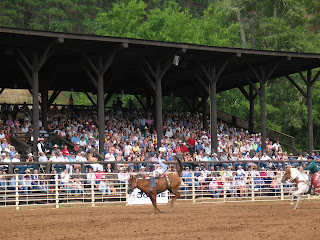





It’s obvious who won the image war between the cowboy and the miner here in Deadwood. Because he was shot to death here the image of Wild Bill Hickok completely dominates this town. They have wrapped the town’s image in his shroud and made a cottage industry out of his killing. There are Hotels, Motels, Restaurants, Casinos, and Museums, using his name and likeness. There are posters and pictures of him everywhere. You can also find bronze and granite statues of him scattered around town. At the rodeo and in the parades a reenactment of that fateful day is repeated over and over again.
There must have been hundreds of miners who were shot, stabbed to death, or had their throats cut here too, but you won’t find any monuments or reenactments glorifying their untimely deaths; Fama blew no trumpet for them. They are lost to western history, trampled into oblivion by the high heeled boot of the cowboy.
There must have been hundreds of miners who were shot, stabbed to death, or had their throats cut here too, but you won’t find any monuments or reenactments glorifying their untimely deaths; Fama blew no trumpet for them. They are lost to western history, trampled into oblivion by the high heeled boot of the cowboy.



















